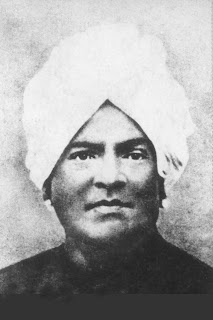
Dalit History Month
Black Americans have protested the slavery and racism thrust on them
by the Whites through many forums including those of Black literature
and politics. One such forum is Black History Month. They announced
and celebrate February as Black History Month to redeem their racial
history that has been side-lined so far. February is an important
month in Black history - This is the month that people like Frederick
Douglass, Abraham Lincoln and W.E.B. Du Bois, who fought against the
system of slavery, were born. The big corporate houses and the
American government also celebrate Black History Month. Stamps to
honour leading members of the Black community are issued in this time.
Using the celebrations of Black History Month as an example, Dalits
announced and celebrate April as Dalit History Month to redeem the
history of the struggles for social emancipation and political service
of Dalit leaders who have been ignored and deliberately forgotten, to
write about this history and take it to the people through various
media. Towards redeeming for research the histories that were hidden,
twisted and re-written vengefully by the Brahmin and middle-castes,
pamphlets and books are published and conferences organised as part of
the Dalit History Month celebrations every April. It is most
appropriate to observe this in April, the month that the revolutionary
Ambedkar was born. He remains the most important symbol for Dalit
people in the struggle against untouchability and caste.
Tamil Dalit history can be told from the 18th century. However, there
are printed documents available only from the 19th century onwards. It
is necessary that we unearth the organisations and revolutions of and
obstacles in the path of Dalit leaders creating ideas for social
emancipation, inaugurating the Dravidian Sangam and thinking about
such things as resistance to Vedic religion, rejecting the culture of
the Hindi speakers, self-respect, and Tamil language pride in 19th-
century Tamil Nadu. The mistaken idea that untouchability and slavery
have been the history of the Dalit people has become ingrained in
common sense. Untouchability was imposed on Dalits only for a few
centuries. The celebration of Dalit History Month will also help to
write scientifically-sound answers to such questions as: Why was
untouchability thrust upon Dalits? How were the untouchable castes
formed?
We must celebrate every April as Dalit History Month to bring into
history the unknown documents and speeches of Dalit leaders, in a way
that will impact society at large.
Many power structures and traditions work to increase or decrease
income inequalities and exploitation through culture. Yet in India,
caste is a power structure that enables suppression and exploitation.
Unless this structure is removed from the root, there will be no
opportunity for equality, social justice and humanitarianism to
flourish here.No cultured society can accept the social evil of
untouchability. This Dalit History Month will provide an opportunity
to discuss in public spaces the everyday violence that Dalits face and
resist.
In the struggle to reclaim the rights of the Black people, Whites
gathered with humility under Black leadership. Can we expect the same
from the daily enforcers of untouchability - the dominant castes - in
the struggle to abolish untouchability?
Paari. chelian
மிகவும் நன்றி தோழர் மலர்விழி

2 comments:
A few facts on Rev.T.John Ratnam
TEYNAMPET JOHN RATNAM (T. John Ratnam )
• Was a leading and very influential figure of the Methodist Mission ( Circuit Superintendent)
• Broke away from the Royapettah Wesley church in 1922 (when caste divisions reared their
head) and formed the National Church of India in 1923.
• Several caste? Christians like Chakkarai Chettiar (Mayor of Madras) followed him to the NCI
because of its Nationalistic character.
• The church flourished for about 10 years at Balasundara Vilas, No.146, Mount Road, Cathedral Post.
• Rev T. John Ratnam through his influence with the European authorities ordained himself as Reverend and obtained Marriage Licence(?) under Rule no.9 & 6.
• He ordained 06 Reverends under him. They were
I. Rev.Kanthimathi - Kodambakkam
II. Rev.Peter Manickam - Peters Road
III. Rev. Antony Jacob - Ambur
IV. Rev. Raymonds - KGF
V. Rev.S.C.Mathews - Kodambakkam
VI. Rev.Absalom David
The NCI floundered after Rev John Ratnam died in 1940.His only (adopted) son Mr.Johnson divided the property and sold half of it .As the building itself was halved no worship could be conducted. Also many families had left the church. Only Rev. Absalom David and Rev. S.C. Mathews remained and they led the church till 1949.After this the church was relocated to Rev. Absalom David`s house in Thomayappan Street, Royapettah and worship conducted by Rev. Absalom David`s son Mr. Aaron David and Mr. W.D. Solomon. With not much support and dwindling members, Mr. Aaron David and Mr.W.D.Solomon met Rev. Yesudian of the Wesley Church, Royapettah and expressed their desire to return to the Royapettah
Wesley fold. They were welcomed back in the Royapettah Wesley in 1955.Whatever assets and records that were pertaining to the NCI were handed over to Rev. Yesudian.
Thus the chapter of the National Church of India of Rev.T.John Ratnam came to an end.
- As narrated by Mr. Aaron David , Thomayappan Street , Royapettah
thank you for the writings on rew.t.john rathnam
Post a Comment